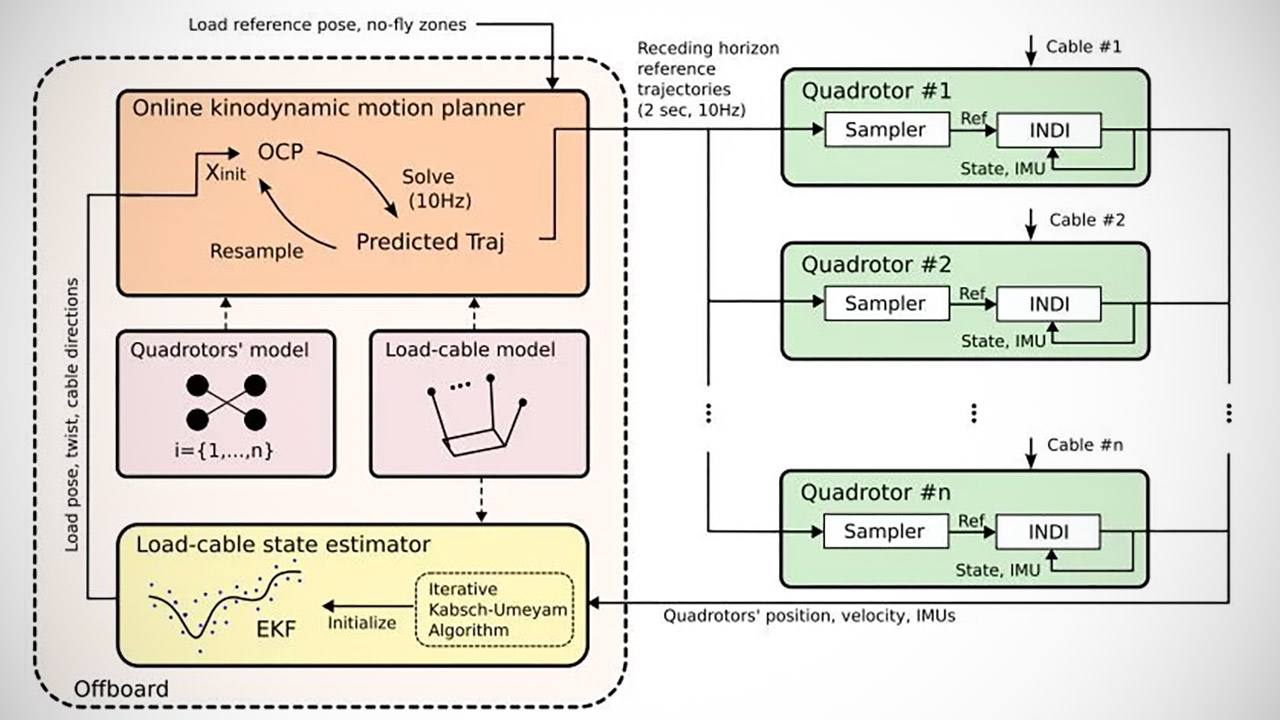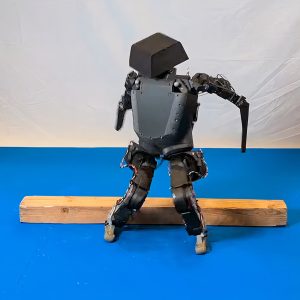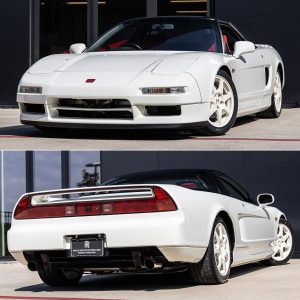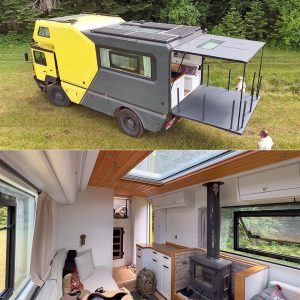When Autonomous Drones Team Up, the Heavy Lifting Gets Lighter


A group of miniature quadcopter drones sit in a lab at TU Delft, cables trailing from their bellies like umbilical cords to a shared load beneath. The load sways slightly as they lift off, but the machines quickly settle into a pattern, pulling together with silent precision. Researchers have spent years working toward this kind of harmony, and now they’ve cracked the code to turn a slew of off-the-shelf drones into a force capable of lifting weights much beyond what one could manage alone.
Sihao Sun, the robotics researcher leading the charge, remembers the frustration of the early tests. “A single drone can only carry a very limited load,” he says. “This makes it hard to use drones for tasks like delivering heavy building materials to remote areas, transporting large amounts of crops in mountainous regions or assisting in rescue missions.” His team built custom quadrotors from scratch, each one a compact bundle of motors and batteries, and wired them to a central payload with simple cables. Up to four of these machines in the lab setup, but simulations went up to nine. The drones don’t just lift the weight; they tilt and turn it midair, guiding a crate or a basketball-sized dummy through doorways and around obstacles without a hitch.

DJI Neo, Mini Drone with 4K UHD Camera for Adults, 135g Self Flying Drone that Follows You, Palm Takeoff,…
- Due to platform compatibility issue, the DJI Fly app has been removed from Google Play. DJI Neo must be activated in the DJI Fly App, to ensure a…
- Lightweight and Regulation Friendly – At just 135g, this drone with camera for adults 4K may be even lighter than your phone and does not require FAA…
- Palm Takeoff & Landing, Go Controller-Free [1] – Neo takes off from your hand with just a push of a button. The safe and easy operation of this drone…
Coordination is more than just raw power. Traditional drone controls fail here too, too stiff to handle the push and pull between connected machines. Sun’s team faced that head on. “The real challenge is the coordination,” Sun says. “When drones are physically connected, they have to respond to each other and to external disturbances like sudden movements of the payload in rapid motions. Traditional control algorithms are simply too sluggish and stiff for it.” Their system begins with a planner that plots the pathways taking into account every swing of the wires, shift in the load’s balance, and full sway of the drones themselves. This blueprint is fed into onboard controllers, which are tiny computers that modify rotor speeds in real time to keep the entire formation stable even as a fan blows gusts over the test space.

Tests unfolded in a controlled room with a bunch of motion capture cameras all over the place, the kind that track your every movement in real time. The drones lifted loads, dodged foam obstacles with ease, and just shrugged off the force from that big wind fan. They even had to deal with a basketball rigged up to bounce around and roll out unexpectedly, to mimic a rogue payload. Throughout, the quadcopters performed admirably, accelerating almost eight times faster than the previous method while maintaining a constant load. There were no extra expensive sensors cluttering up the cargo, so they could use their own eyes and a little math to determine the tension in the cables. Scale that simulation program up, and the entire system handled nine units like it was nothing – even though they knew the hardware couldn’t handle that many in a real flight, they were able to get four working in the field. Each time, it worked somewhat better than the previous time, demonstrating how a minor adjustments in thrust could have made the difference between success and disaster in earlier attempts.
[Source]
When Autonomous Drones Team Up, the Heavy Lifting Gets Lighter
#Autonomous #Drones #Team #Heavy #Lifting #Lighter







